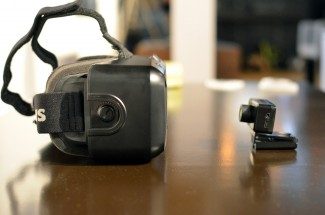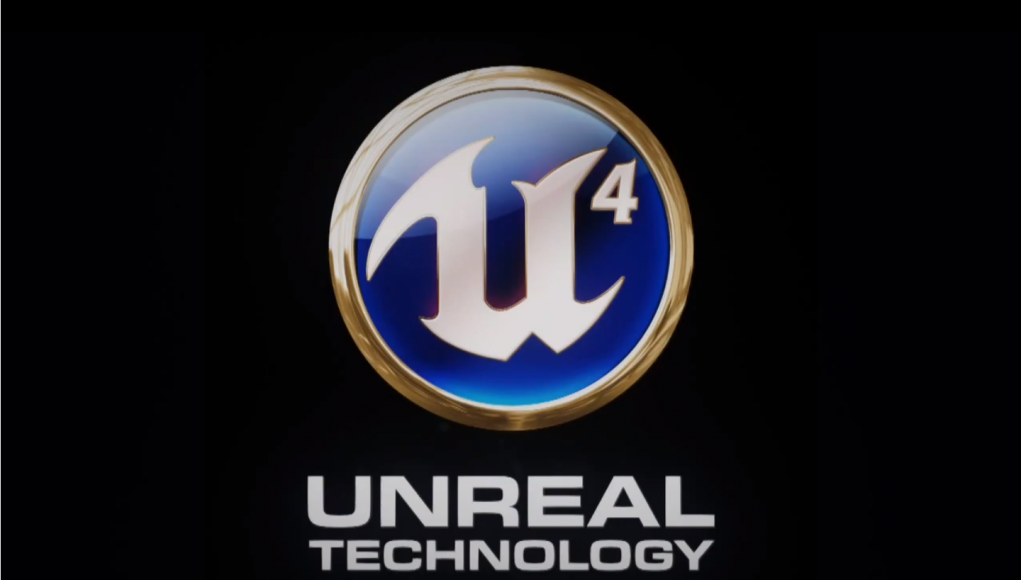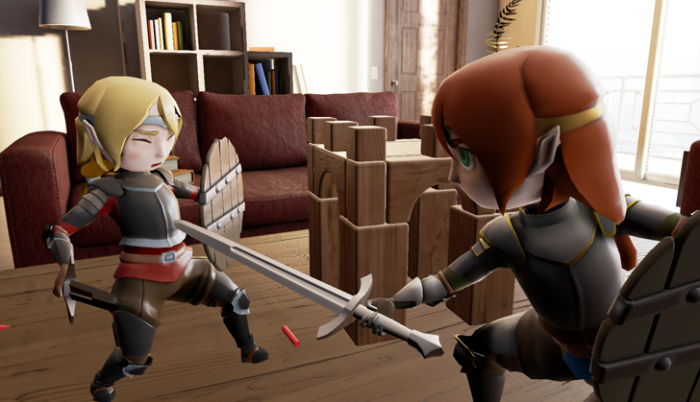Unreal Engine 4 has only been on general release since March but has made quite an impression on developers. Its low cost of entry, wealth of supporting documentation, tutorials and its ‘no coding required’ approach to game development has given developers of all budgets and abilities access to cutting-edge 3D game technology.
Epic, the company behind Unreal Engine 4 have just announced the latest iteration. Version 4.3 promises over 500 updates. Amidst the tweaks and technology improvements such as a preview of Paper 3D, UE4’s 2D game specific toolset, IOS8 Metal API (Apple’s new performance focussed game APIs) and various rendering improvements, there are a few fairly exciting additions for virtual reality fans.
Oculus Rift DK2 Support Including Positional Tracking
 As we reported recently, Oculus VR has delayed the shipment of the initial batch of DK2 units in order to apply spit and polish to their SDK (Software Development Kit). UE4 includes support for a preview of this latest version, 0.3.3, which includes support for the DK2 and its positional tracking capabilities. This means developers opting for UE4 can hit the ground running with their projects when DK2’s begin to ship – estimated to begin middle of next week.
As we reported recently, Oculus VR has delayed the shipment of the initial batch of DK2 units in order to apply spit and polish to their SDK (Software Development Kit). UE4 includes support for a preview of this latest version, 0.3.3, which includes support for the DK2 and its positional tracking capabilities. This means developers opting for UE4 can hit the ground running with their projects when DK2’s begin to ship – estimated to begin middle of next week.
‘Couch Knights’ Demo Released
At GDC 2014 back in March the much anticipated successor to Oculus’ hugely successful DK1 VR Headset was announced. What’s more, Oculus’ demo area was filled with the new units ready for developers to get their hands on. And, as has now become customary, Oculus teamed up with Epic to develop a demo that showcased DK2’s unique abilities – in particular the new IR LED based optical tracking system.
Couch Knights was quite a low key demo coming after the dazzling spectacle of CES 2014s ‘Crystal Cove’ prototype demos, which included EVE: Valkyrie and a UE4 Tower Defence style game which allowed you to stoop into the game world, peering at characters and details more closely.
Couch Knights is a simple title that places two players, both wearing VR Headsets, into a virtual living room sat comfortably. Both players can see each other’s avatars and (somewhat spookily) stare and lean in to take a close look at them. The gameplay is provided as both players control a 3D cartoon avatar, free to leap about the environment clobbering each other with tiny swords.
This will be one of the few DK2 enabled demos available to DK2 recipients when they finally receive their units over the coming weeks. And, as the project is loadable within the UE4 development environment, acts as a great ‘hello world!’ reference application for developers wanting to get a handle on positional tracking as quickly as possible.
‘Time-warping’ Implemented
Latency is one of VR’s biggest enemies and Oculus declared that unnecessarily delayed ‘motion to photons’ were unacceptable. One of their weapons in fighting latency is a concept called ‘time-warping’, adapted by former id founder and current Oculus VR CTO John Carmack.
Time-warping cuts latency by swiftly transforming a partially rendered frame using the scene’s Z-buffer information and the very latest snapshot of the VR Headset’s tracking data. The practical upshot is, the scene presented to you more closely reflects your physical movements – effectively reducing perceived latency.
If you struggled with that explanation (and, frankly, I wouldn’t blame you) – eVRdayVR‘s excellent video should help you grasp the concept.
Check out the Unreal Engine 4 website for details on the latest update and to sign up for developer access.








